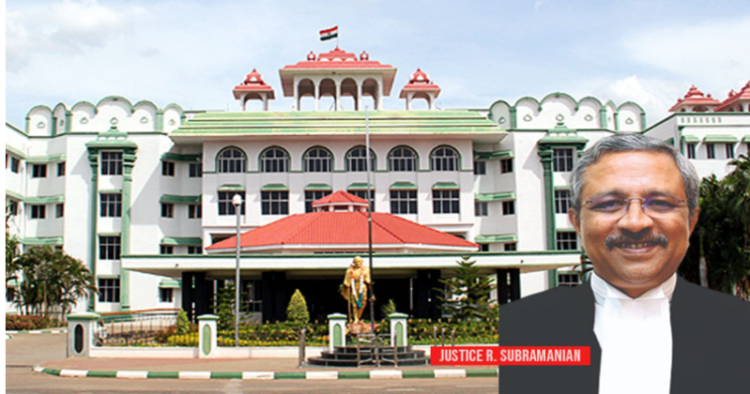CHENNAI: In an important development, Justice Subramanian of the Madurai Bench of the Madras High Court has publicly expressed his disagreement with the recommendations made by retired Justice K. Chandru regarding caste conflicts in educational institutions. Justice Chandru, a former judge of the Madras High Court, was appointed by the Tamil Nadu government to head a one-man committee to address and recommend measures to prevent caste-based discrimination and conflicts in schools and colleges across the state.
The committee was formed following a disturbing incident in Nanguneri, Tirunelveli district, where a student was assaulted by peers in a caste-related attack. In response, the Tamil Nadu government entrusted retired Justice Chandru, known for his Marxist leanings, to conduct a thorough inquiry and propose solutions. In June 2024, Chandru submitted a comprehensive 610-page report to Tamil Nadu Chief Minister M.K. Stalin. The report included a series of recommendations aimed at curbing caste-based practices in educational institutions.
One of the most controversial recommendations (Point 8B) suggested that students be prohibited from wearing any symbols of caste affiliation, including coloured wristbands, rings, and forehead marks (Tilaka). Additionally, it proposed restrictions on caste references, such as bicycles painted to signify caste affiliations. The report called for immediate disciplinary action against students who did not comply, as well as advising parents or guardians.
காரக்கொழம்புக்கு சவுக்கடி கொடுத்திருக்காரு மதுரை நீதிபதி 😆😆👏👏 pic.twitter.com/hmaRAPsqWc
— ArunmozhiVarman 🇮🇳 🕉🚩🛕🎻🎧🎙🎶 (@Arunmozhi_Raaja) September 3, 2024
The report also recommended removing caste names, hiding caste-related markers, and amending the Tamil Nadu Societies Registration Act, 1975, to prevent educational institutions from being named after caste groups. However, Justice Chandru’s recommendations were criticized for targeting Hindu practices, while not addressing the wearing of hijabs or rosaries by Muslim and Christian students. This selective approach triggered protests from the Bharatiya Janata Party (BJP) and Hindu Munnani, who claimed the report was anti-Hindu.
While the Tamil Nadu government has not yet implemented the recommendations, the report has sparked widespread debate. Justice Subramanian, a sitting judge of the Madurai Bench, became the first high-ranking judicial official to openly reject Chandru’s suggestions. Speaking during a hearing related to the appointment of deans in government medical colleges, Justice Subramanian questioned the state’s prompt acceptance of the Chandru panel’s recommendations, while the appointment of permanent deans had been delayed.
In his remarks, Justice Subramanian emphasised that combating caste-based discrimination requires fostering greater tolerance, rather than banning religious symbols. He voiced his personal opposition to the report, stating, “The recommendations of the committee led by the retired judge to avoid caste conflicts in schools are not acceptable to me. To eradicate caste discrimination, we need to increase tolerance.” He further added, “After the retired Justice’s report, I am wearing Vibuthi – sacred ash – on my forehead.”
பள்ளிகளில் சாதிய மோதல் தொடர்பான சந்துரு அறிக்கையில் உடன்பாடு இல்லை..
~ நீதியரசர் சுப்பிரமணியன் pic.twitter.com/PBSuHkVZdx— K.Jayaprakash (@itskJayaprakash) September 3, 2024
Justice Subramanian’s comments have added fuel to an already heated debate, with political and social groups deeply divided on the issue. While proponents of Chandru’s report argue that it seeks to eliminate casteism from educational spaces, critics say that it disproportionately targets Hindu customs and traditions while leaving other religious practices untouched.
The Chandru report also suggested introducing new legislation to promote social inclusion and eradicate caste discrimination, with responsibilities placed on students, staff, and school management. It proposed mechanisms for supervision and penalties for non-compliance in order to enforce its recommendations effectively. However, with opposition growing from both political quarters and within the judiciary itself, the future of these recommendations remains uncertain.














Comments